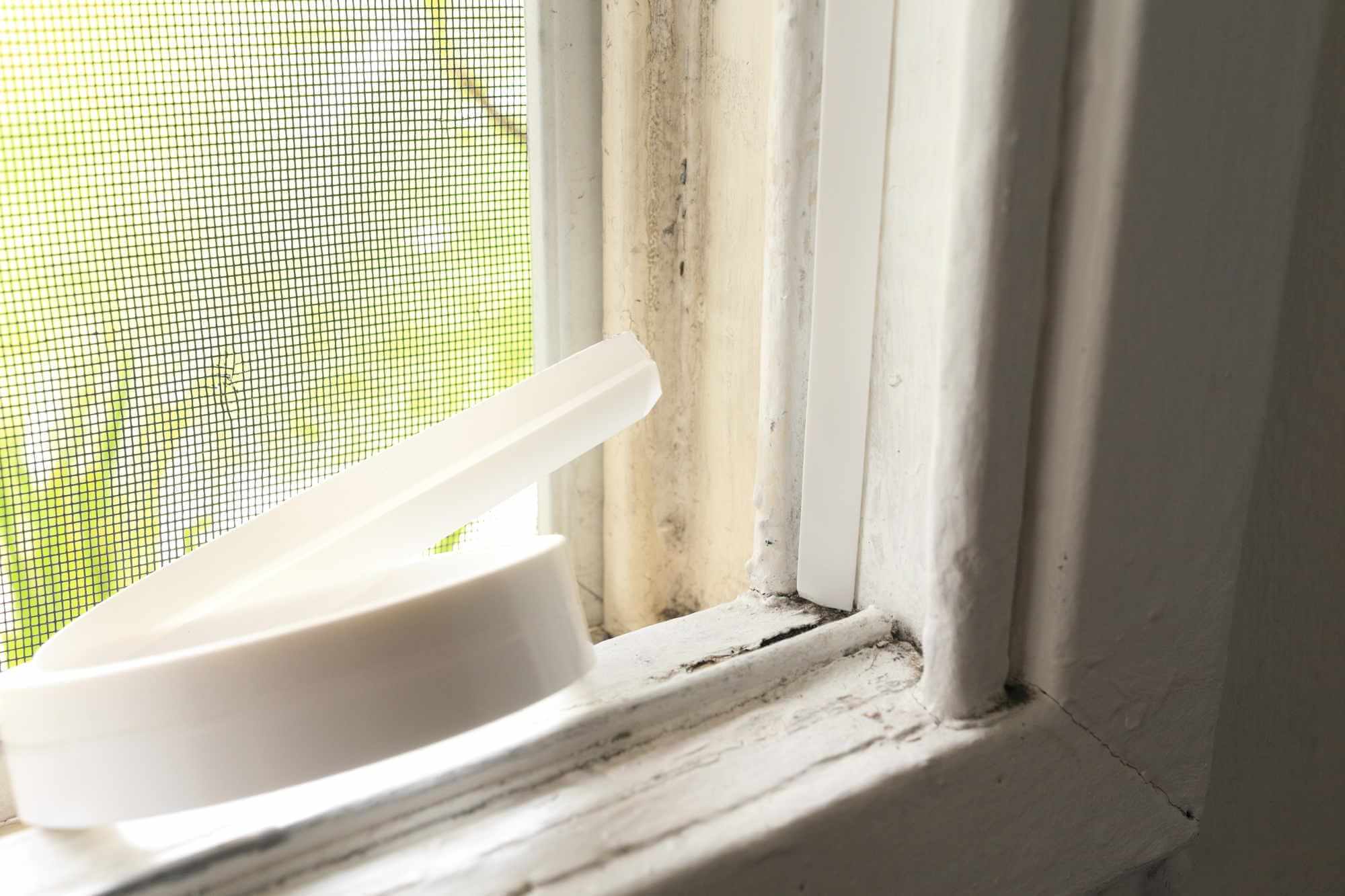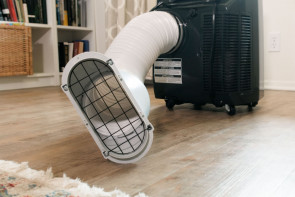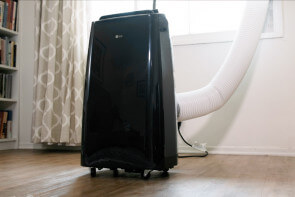
How To Effectively Insulate Your Windows
We can show you how to insulate windows to save money on heating in the winter or cooling in the summer. Even old, drafty windows can benefit from some simple DIY tricks.
The first step in improving your window’s insulation is to decide what problem you want to focus on. If you find air leaks in a closed window, that’s an easy first step. After that, some window treatments will help improve insulation in different ways: plastic sealing film boosts insulation without giving up light, close-fitting shades or drapes add all-season versatility, and reflective treatments help keep the heat out in summer.
How to find leaks in windows and doors
According to the U.S. Department of Energy, air moving in and out of houses through poorly sealed windows and doors is responsible for one third of all wasted heating and cooling energy. Even if you’re using a portable air conditioner, a more-efficient window air conditioner or a space heater to get your cooling or heat right where you need it, keeping heat from moving in or out through windows will make a big difference in cutting down your utility bills.
Finding air leaks is actually pretty simple. The exhaust fans in your kitchen and bathrooms should create enough negative pressure inside your house to draw a steady stream of air through gaps and cracks, even if there’s no wind outside. You can get some extra airflow by running a clothes dryer. If you have to, set up a large fan in a window to blow air out of the house and start the air coming in through cracks.
Tools you’ll need:
- A strip of lightweight paper (like toilet paper) or an incense stick
- A roll of masking tape

Steps:
- Make sure your strip of paper is light enough that it will flutter and sway when you blow on it gently. If you’ve got an incense stick, its wisps of smoke can quickly show you where air is leaking.
- Tear off some strips of masking tape to mark leaks as you find them.
- Close all windows and exterior doors, as well as fireplace flues.
- Turn on all exhaust fans.
- Move the tissue paper or burning incense stick around the perimeter of windows and doors.
- Mark every spot where you find a draft.
Are some air leaks required?
If you live in a moderate climate where heating or cooling are only turned on for a short season, older houses will often be very drafty. In these homes, sealing leaks will help you save money when you need to turn on your HVAC system.
New home building standards are much more strict about how much air is allowed to move in and out, and homes are specifically designed to allow a minimum of 15 cubic feet per minute of fresh air exchange for every occupant. If you live in a newer house built to this standard, you shouldn’t try to seal it even tighter. You should also make sure to use exhaust fans in bathrooms and kitchens on a regular basis to help keep your indoor air fresh.
If you find that your air is too dry, too humid, or that dust and odors are a problem when you seal up your house during heating and cooling months, you can improve the situation somewhat with a room humidifier, a dehumidifier or an air purifier.
How to seal leaks

Weather stripping or foam tape for window gaps
A simple folded piece of self-adhesive vinyl tape, called a “v-seal” or “tension seal” can fill in gaps where the window closes against the frame, but it’s almost invisible. It can last for many years, though you should check it every season and open up the fold if it gets squished too tight. V-seal can even be used in a sliding window track.
Another option is thick EPDM rubber or spongy open-cell foam tape, which can fill bigger gaps and provide some cushion for windows that get slammed shut. Foam is the most affordable and compresses very well, but it isn’t as durable as other types of weather stripping. If you try either rubber or foam make sure it doesn’t take up too much space and prevent your window from latching closed before you stick it down.
Caulking for cracks in window casing
If you find air coming in around the outside of your window casing instead of the track, you can run a bead of caulking to fill small cracks. Clear and white are both very easy to find, and should blend in with most window frames, but you can also get paintable caulking. There are also removable caulk products that you can use to completely seal up a window just for the winter.
Expanding foam for large voids

If there’s a large gap behind your window frame trim, removing the trim and filling the gap with expanding foam sealant will help with drafts that caulking can’t stop. Just remember that this stuff really does expand 10 times or more — make sure you contain any excess and cover up the filled gap with trim when the foam is dry.
Window coverings for DIY insulation
Once you stop any drafts from the window track or around the frame, you can go a step further and address the insulation value of the window itself.
There are two other ways you can improve window insulation:
- Create a bubble of still air next to the window to trap heat
- In summer, reflect sunlight away so it doesn’t heat your room
Drapes and blinds can accomplish both of these goals. The EPA rates window treatments for both heating and cooling seasons, and close-fitting cellular blinds or window quilts are their top pick for trapping heat and reflecting sunlight.
Even basic drapes with a white backing can reflect away some heat in the summer, but if you want to use flowing drapes instead of close-fitting blinds you’ll need to make sure they actually touch the wall on all sides to trap enough air for effective insulation. A “return rod” or “concealed” curtain rod works well for this if the shape of your wall doesn’t naturally create a pocket for the window.
If your drapes are set away from the window, adding a “cap” piece over the top is crucial to keep drafts from flowing out — but you’ll have to make it yourself; common DIY kits don’t include anything for this purpose.
Using plastic to cover windows to keep heat in

If you don’t need to open your windows in the colder months, you can seal them with shrink-to-fit plastic film to boost insulation without blocking sunlight.
The plastic sheet comes with double-sided tape. After securely attaching the sheet to all sides of your window frame, you must heat the plastic with a hair dryer (see our picks for the best here) so it shrinks. This removes wrinkles and helps seal the sides to trap an insulating pocket of air.
Shrink film still allows that precious natural light (and heat) into your room during winter daylight hours. The window will be cloudy, though, so it’s not an ideal choice for a large window with a scenic view.
DIY reflective window film to keep heat out
If your concern is keeping heat out during the day, but you don’t want to block your windows with shades or drapes, a peel-and-stick one-way-reflective window film or solar screen is a good alternative. Even if you’ve got an efficient cooling solution like an energy-star certified window air conditioner, keeping out the hottest solar rays can cut down on how much you need to run your air conditioner to hit the perfect temperature.
Window films are rated with a 0.0–1.0 Solar Heat Gain Coefficient (“SHGC”) for how much heat they let through, where 1.0 is the same as no treatment and 0.0 means the treatment blocks all heat. The more-reflective screens and films will also give you extra privacy during the day, but not at night.
If your HVAC system adds heat in the winter, sun-reflecting screens are better than reflective film since they’re easier to remove when you want to let that solar heat in. Some reflective film is reusable, but if you take it down every season the adhesive cling will wear out much faster.








